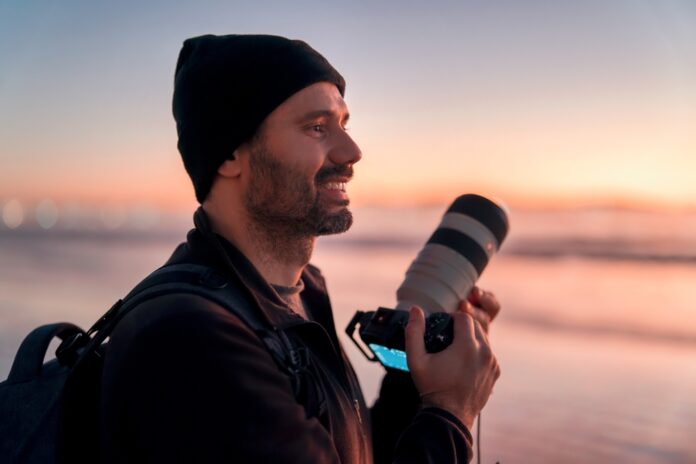Photography is more than just capturing images; it’s a form of art, a way to express creativity, and a means to see the world through a different lens. If you’re considering diving into photography as a hobby, you’re about to embark on an exciting journey. This guide will help you get started, from choosing the right equipment to exploring various photography styles.
Choosing the Right Camera Equipment
Your journey begins with selecting the right camera. With numerous options available, it’s essential to find one that suits your needs and budget.
Types of Cameras:
- Smartphones: Modern smartphones have impressive cameras and are great for casual photography.
- Point-and-Shoot Cameras: Compact and user-friendly, perfect for beginners.
- Mirrorless Cameras: Offer high image quality with interchangeable lenses in a compact form.
- Digital Single-Lens Reflex (DSLR) Cameras: Provide versatility and professional-level features.
When starting, it’s recommended to invest in a simple setup with a good camera body and a fixed lens like a 50mm or 35mm. Brands like Nikon and Canon are reliable choices. Consider purchasing high-quality used equipment from reputable sources to save costs.
Understanding the Basics of Photography
To make the most of your camera, it’s crucial to understand fundamental photography concepts.
Learn the Exposure Triangle:
- Aperture: Controls the depth of field.
- Shutter Speed: Determines how motion is captured.
- ISO: Adjusts the camera’s sensitivity to light.
Mastering these elements allows you to take control of your images creatively. Experiment with manual mode to fully utilize your camera’s capabilities.
Composition Techniques:
- Rule of Thirds: Position your subject off-center to create balance.
- Leading Lines: Use natural lines to draw the viewer’s eye into the image.
- Framing: Surround your subject with elements to focus attention.
Understanding these techniques enhances the aesthetic appeal of your photos.
Learning Through Practice and Education
Photography is a skill honed over time with practice and learning.
Educational Resources:
- Online Tutorials: Platforms like CreativeLive offer free live classes.
- Workshops and Courses: Enroll in affordable online courses to deepen your knowledge.
- Books and Guides: Study materials that cover technical and creative aspects.
Don’t hesitate to seek guidance from experienced photographers. Mentorship can accelerate your learning process.
Regular Practice:
Carry your camera with you and dedicate time each week to practice. Set specific goals, such as mastering shutter speed or improving composition, to focus your efforts.
Exploring Different Genres of Photography
Photography offers a variety of genres, each with its unique challenges and rewards.
- Portrait Photography: Capturing the essence of individuals.
- Landscape Photography: Showcasing natural beauty and environments.
- Street Photography: Documenting everyday life in public spaces.
- Macro Photography: Exploring details in small subjects.
Trying out different styles helps you discover your passion and develop your unique photography style.
Joining a Photography Community
Being part of a community enriches your photography experience.
- Local Photography Clubs: Meet like-minded individuals to share experiences.
- Online Forums and Groups: Platforms like Facebook groups or forums offer support and feedback.
- Workshops and Meetups: Participate in events to learn and network.
Engaging with a community provides opportunities to learn and grow. It’s a chance to receive constructive critiques and stay motivated.
Editing and Organizing Your Photos
Post-processing is an integral part of modern photography.
Editing Software:
- Adobe Lightroom and Photoshop: Industry-standard tools for photo editing.
- Free Alternatives: Programs like GIMP or Darktable offer robust features without cost.
Editing allows you to enhance your images, adjust exposure, colors, and crop for better composition. Remember to organize and back up your photos to protect your work and maintain an efficient workflow.
Taking the Next Steps: Advanced Equipment and Monetizing
As your skills improve, you might consider expanding your equipment and exploring professional opportunities.
Upgrading Gear:
- Lenses: Invest in lenses suited to your preferred photography style.
- External Flashes: Enhance your lighting capabilities.
- Tripods and Stabilizers: For sharper images and creative techniques.
Don’t rush into buying expensive gear. Upgrade when you feel limited by your current equipment and ready to advance further.
Monetizing Your Hobby:
- Stock Photography: Sell your photos on stock websites.
- Freelance Work: Offer services for events or portraits.
- Prints and Merchandise: Sell prints or use your images on products.
Transitioning to a professional photographer requires careful planning and understanding of the industry.
Conclusion
Starting photography as a hobby is a rewarding endeavor that fosters creativity and offers a new perspective on the world. By choosing the right equipment, learning the basics, practicing regularly, and engaging with the community, you’ll find joy and fulfillment in capturing moments.
Remember, photography is not just about the gear or technical perfection; it’s about expressing yourself and enjoying the process of creating images. So grab your camera, explore, experiment, and most importantly, have fun with it!


